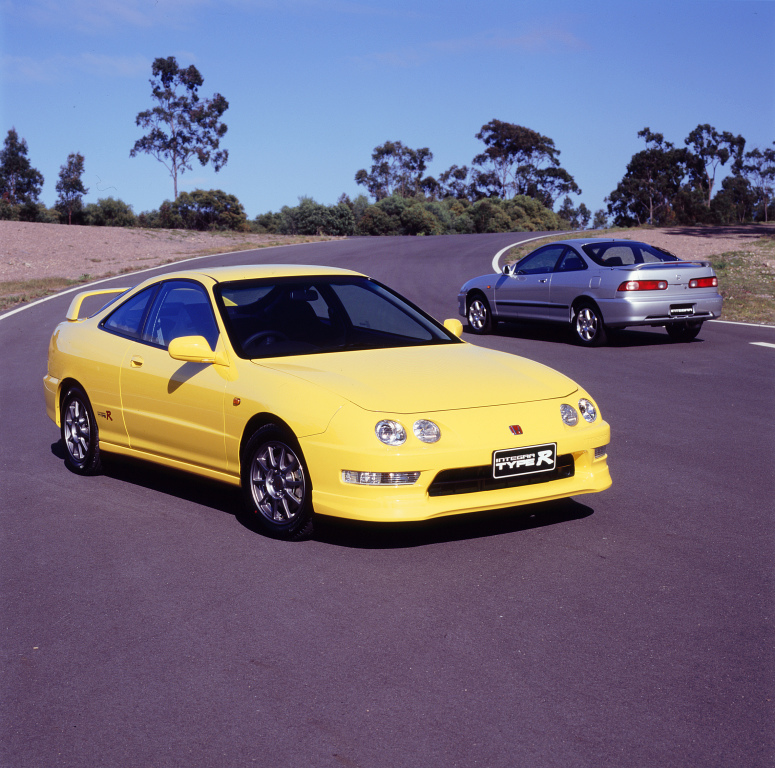
The Third-Generation Integra, Known as "The Greatest Front-Wheel-Drive Performance Car Ever" 🚗💨

📌 Original: Honda Magazine, Japanese Car Enthusiast Magazine, [Today's Date]
🌟 Hello, my friend... Welcome to a hidden gem—OLD FISHER DISCOUNT, your one-stop online shop with 9,999+ unique finds waiting for you. 🎉 🛒 Explore a World of Discoveries Dive into our collection and uncover special treasures that will delight and inspire. ✨ 🔗 Start Your Journey Here: www.fisherdiscount.com Come and see why we’re more than just a shop; we’re a place of endless possibilities! 🚀
Continuing from the previous article, where we discussed the second-generation Integra, we can see that the second-generation Integra had already begun to show its performance potential. However, with the third generation, its performance advanced even further, and it featured a Type R version. Moreover, Honda’s first four-door Type R was also born in this generation. Without further ado, let’s get into the main topic. ✨🔥
🚘 The Birth of the Third-Generation Integra The third-generation Integra made its debut in 1993 at Honda’s exclusive Integra dealership, Verno. The chassis codes for this generation were DB6-DB9, DC1-DC2, and DC4. This car shared a platform with the EG Civic and was sold until 2001. 🚗💨
Apart from these chassis numbers, between 1996 and 2001, Honda also introduced a model called the Integra SJ. Although this car was classified under the third-generation Integra series, it did not use the EG platform. Instead, its chassis code was EK3. Additionally, it was not sold through Verno dealerships but through Honda Primo dealerships. In Thailand, it even carried the Isuzu badge. 🤯
Returning to the mainstream third-generation Integra, this generation initially debuted with a four-round-headlight design, which Integra enthusiasts referred to as the "Spider Eyes." However, it should be noted that at this stage, the Integra was not yet sold in Japan. Because the four-round-headlight design was not well received by Japanese consumers, Honda redesigned it in 1995 with elongated headlights before officially launching it in Japan. 😮
💡 Did You Know? The four-round-headlight third-generation Integra was the original exterior design, but it was only unveiled in Japan at first and was not sold there. It was only later that the four-round-headlight version became available in Japan.
🔥 Power & Performance The standard version of the Integra was already equipped with the B18 series engine. The base version came with the B18B engine, producing only 144 horsepower. The Si and North American GS-R versionswere equipped with the B18C engine, which produced 170 horsepower. 💪💨
One of the biggest features of this generation was its increased displacement. The engine was upgraded from the second-generation B16 to the B18B. In terms of power output, the Japanese-spec B18B produced 144 horsepower, while the American version, the B18B1, had a slightly lower compression ratio, resulting in lower horsepower output. 🚗💨
At this time, the Integra did not yet have a Type R version, with the highest-performance model being the Si, which was also equipped with the B18 engine—but not the B18B, rather the B18C. The B18C engine at this stage had 178 horsepower, still somewhat short of the red-top 200-horsepower variant.
⚙️ Luxury Meets Sportiness As mentioned in the previous article, the Integra was positioned as both a luxury and sports car. Therefore, besides performance improvements, the third-generation Integra also saw enhancements in comfort. It offered more safety systems, such as ABS and TCS, as well as multi-disc CD players, leather seats, a leather steering wheel, and a leather-wrapped gear shifter. The configuration was quite generous. 🤩
This generation of the Integra was available with both a 5-speed manual transmission and a 4-speed automatic transmission.
🔧 Differences Between the B18C and B18C-R The black-top B18C engine and the red-top B18C-R had several differences. Apart from internal details and the red valve cover, the most noticeable difference between the two engines was in the exhaust manifold. 🚘⚡
🚘 Recognizing the Legendary Integra Type R The Type R version debuted in 1995, just as Honda redesigned the Integra’s exterior. As a result, when it was launched in Japan, it already had the elongated headlight design.
The Type R was powered by a re-tuned and improved B18C engine, commonly known as the B18C-R. Depending on the region, this engine had different power outputs. In Japan, it was rated at 200 horsepower, while in North America, it had 198 horsepower. In the UK, it was further reduced to 190 horsepower.
🚀 The Ultimate FWD Performance Car This generation of the Integra was regarded as one of the greatest front-wheel-drive performance cars of all time. Despite having only 200 horsepower, it competed with models like the Skyline GT-R and WRX STI. Many international automotive publications hailed it as the greatest front-wheel-drive performance car ever built. 🏆🔥
As an interesting side note, perhaps due to its immense popularity, the third-generation Integra was ranked as the third most stolen car in the United States in 1998 by CCC Information Services. 😱🚔
That’s the story of the third-generation Integra. Next up is the DC5—stay tuned for updates from Honda Magazine!🚗💨

Leave a comment